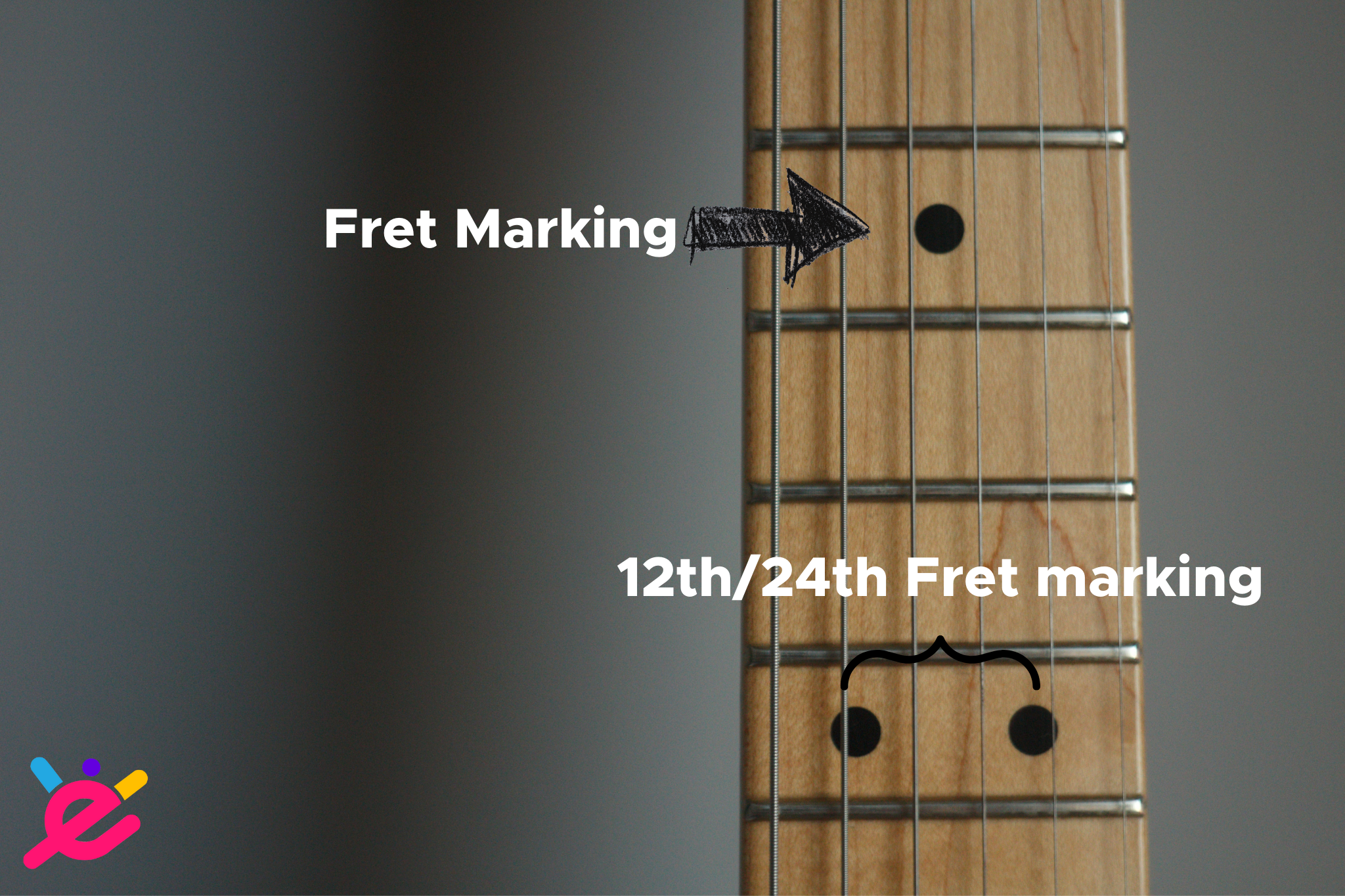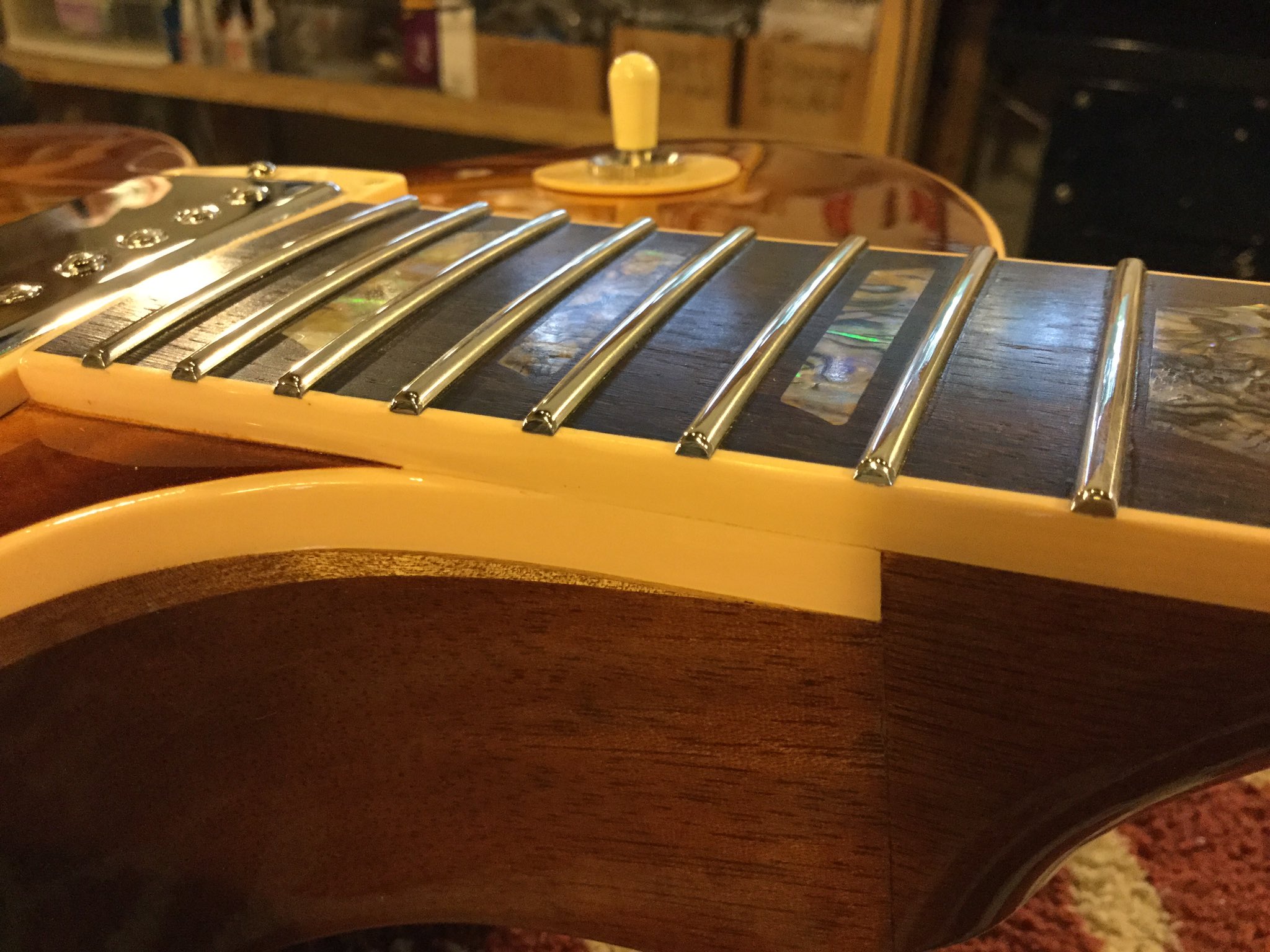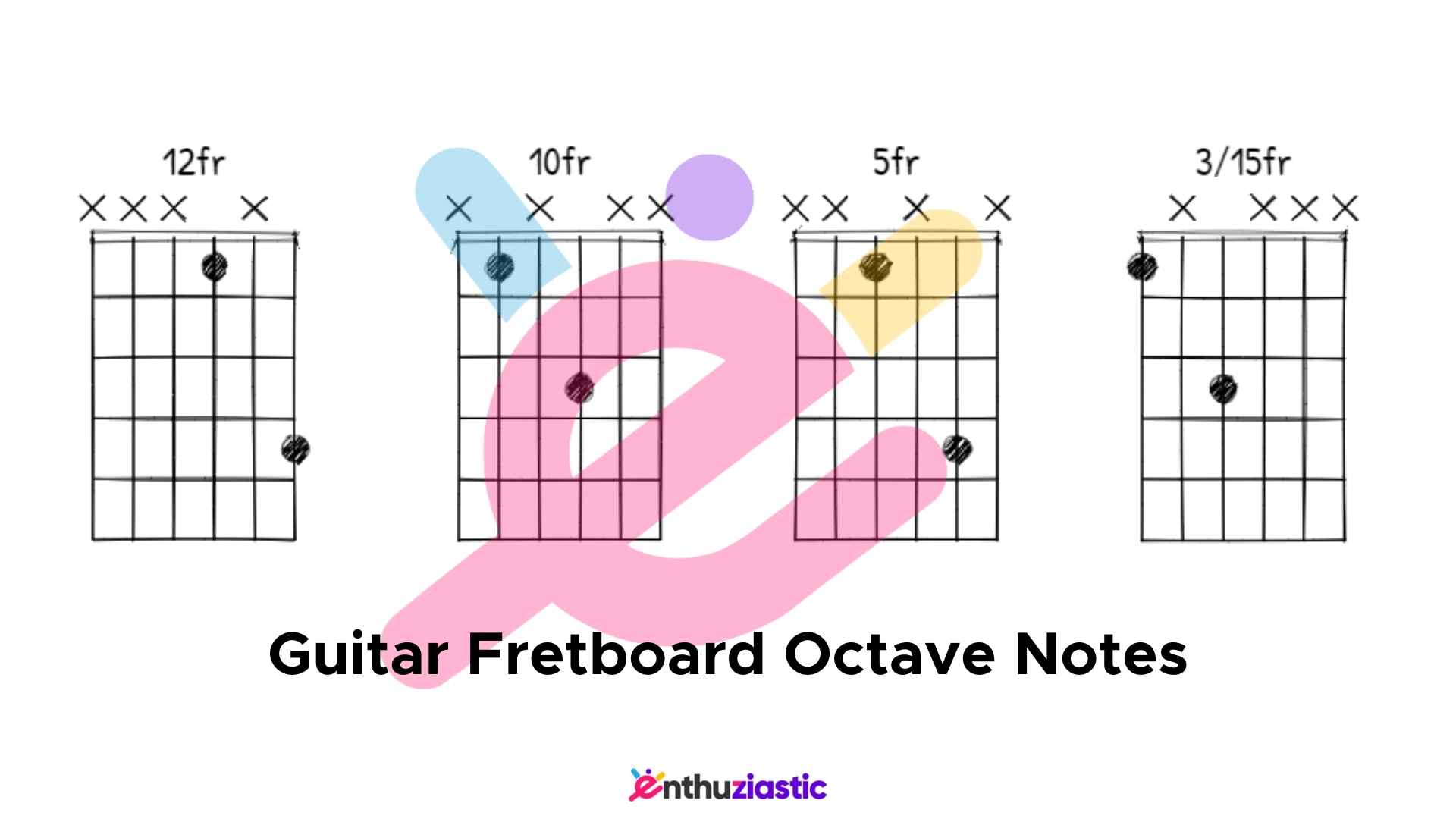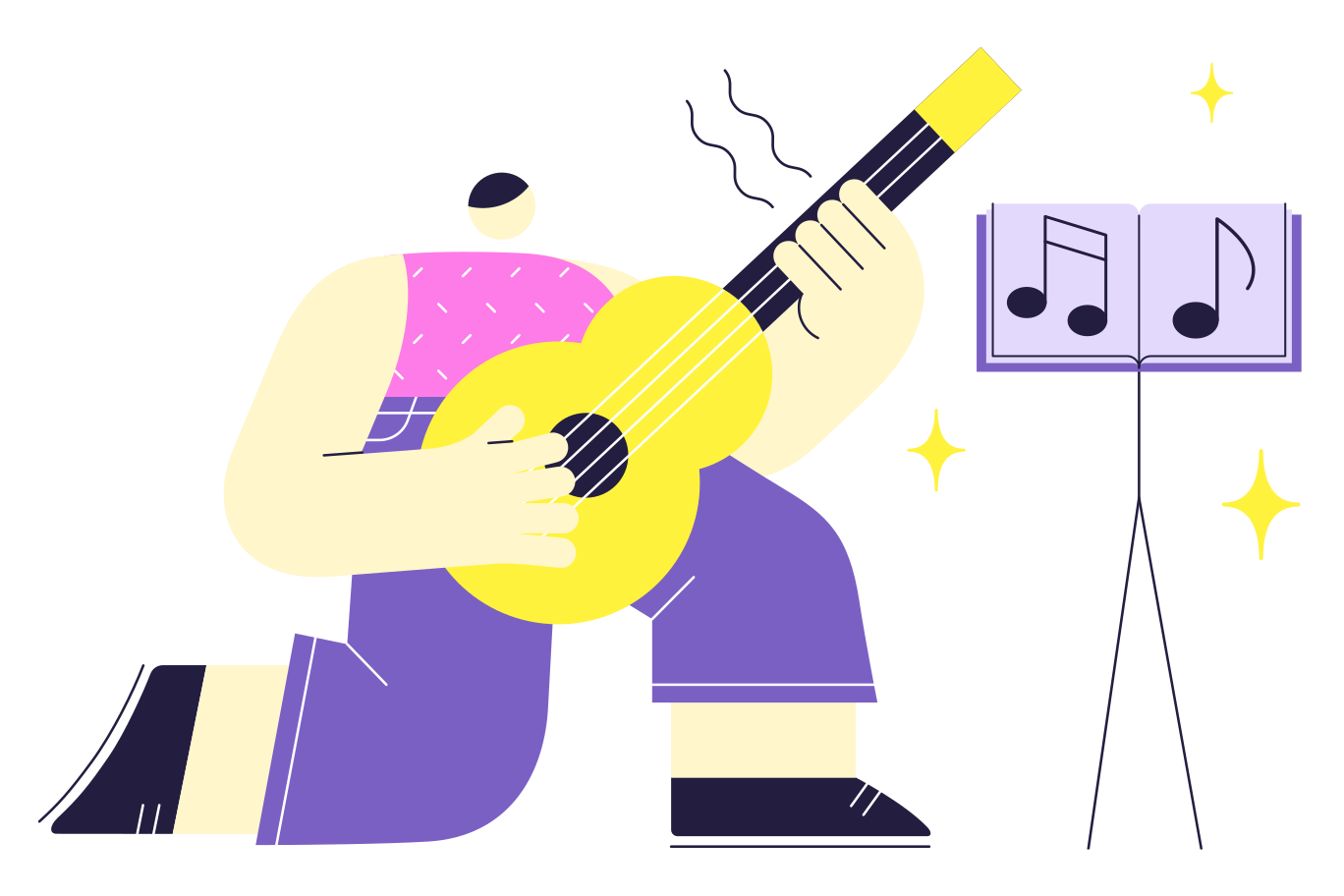The legendary guitar luthier Manuel Velazquez once said, “A guitar is more than just a sound box…it is part of your soul.” and I can’t agree more with this.
You can’t become a great musician if you don’t know your instrument by its core.
Knowing the structure and purpose of each part of your guitar will make you feel close to the instrument.
Frets (singular, fret) maybe tiny in size, but plays a huge role in generating the beautiful tunes. So what is the fret on a guitar? And what does it actually do?
What is the Fret on a Guitar?

Frets are used in almost all the string instruments, especially western string instruments.
If you go through the history of guitar, you will see frets are made of thin strings tied together and wrapped around the fretboard.
A fret is used to change the vibrating length of a particular string to create a specific tune or note.
For example, the 1st (E) gives off a high E note in an open position. The same string offers an F note on 1st fret.
Ideally, a fret is the metal strip itself, but commonly the space between two frets is called a fret in musical terms. For example, the space between the nut at the end of the fingerboard and the first fret is referred to as the ‘first fret’.
Similarly, the space between the first and second frets is considered as the ‘second fret’.
What does a Fret do on Guitar?
FYI, one octave is divided into 12 semitones according to the standardized western system. So, the note at the 12th fret on your guitar is one full octave above the pitch of the string (open position).
The 12th fret divides the scale length in half. Although it may vary in 24 fret guitars.
How to Identify Frets?
Are you thinking of counting your frets every time you have to press down on one? Well, it isn’t that complicated.
In most guitars, fret with odd numbers are marked with fret markers (usually a rounded mark) on the inlays. These work as identifiers and for decorative purposes.

You will find fret marks on 3rd, 5th, 7th, 9th, 12th, 15th, and 19th fret. Fret numbers 21st and 24th are also marked on a 24-fret guitar.
If you notice closely, the 12th fret and the 24th fret are marked with two dots instead of one because from these frets the notes start repeating from the open string.
Evolution of Guitar Frets
Just like any other musical instrument, guitars have come a long way to become what they are today. Frets also followed the path of extreme evolution.
If you go by the pictures of earlier frets, you will notice that those are quite different from the ones we see on guitars nowadays.

Early frets were called ‘bar frets’ because of their shapes. Bar frets are flat-sided metal bars embedded on a guitar, often curved at the edges. These frets were implanted into the respective fret slots on the fingerboard.
These frets are at least three times wider than modern frets we see on guitars. You can still find some vintage guitars embedded with these frets.
Arthur Smith, popularly known as ‘Guitar Boogie’ patented the ‘T-fret’ during the 1920s and soon it replaced the bar frets. These frets are narrower than bar frets and also fit perfectly into the guitar fretboard.
Initially, the edge of a T-fret was rounded, but soon it evolved into a flat-top fret we use in guitars today. The guitars today are decorated with bindings, presented on the fretboard. It makes them look more aesthetic.
Does Shape and Size Matter for Frets?
Every other guitarist has different opinions about it. Some claim that changing frets of a guitar entirely changes the feel and tone, while some deny this claim.
Although it seems like all the ‘T-frets’ are the same, some are made slightly different from each other.
The shape and size of the crown really matters. According to its width and height, it determines how the guitar will feel.
It also feels soft on your hands and allows you to play really fast. That’s why many rock stars and shredders prefer wide and tall crowns.
Number of Frets on a Guitar
The number of frets on a guitar depends entirely on the types of guitars you are choosing. Sometimes, the number of frets also depends on the model of the guitar.
Standard classical or Spanish guitars have 19 frets. However, the guitar neck meets the body of the guitar at the 12th fret.
So, if you want to play the upper frets after 12th, you will have to adjust the position of your picking hand. Also, make sure you hold the right guitar posture for playing those frets smoothly.
Guitars with steel strings have more variations in the number of frets. These instruments usually come with 20 – 21 frets.
For example, Gibson Hummingbird and Martin D-28 come with 20 frets. Yamaha F280 guitar comes with 21 frets.
Nowadays, many acoustic guitars provide a cutaway on the guitar body for easy access of the upper frets.
Electric guitars have the widest range in the number of frets ranging from 21 to 24.
Some of the iconic electric guitars with their fret numbers:
- Fender Stratocaster and Telecaster: Traditionally 21, offering 22 fret variations since the 1980s.
- Gibson Les Paul: 22 frets.
- Gibson SG: 22 frets: joining the body at 19th fret.
- Ibanez 2011: 24 frets.
Notes on the Fretboard
Now that you got familiar with the fretboard let’s take a look at the fret-board notes.

As you can see in the above picture, some notes come with two names. All these notes are both flats (b) and sharps (#).
It means all of these notes are related and made with respect to the 6 major notes on the guitar. If you look closely, you will find these particular notes (with dual names) are placed between major notes.
For example, look at the 5th fret of the high E (1st) string. The note is an A. Now, move up two frets (7th fret) on the same string, and the note becomes B. So, the note on the 6th fret depends on how you play the string.
If you take the B note and lower it one fret, you get the B flat (Bb). At the same time, if you take the A note and raise it one fret, you get the note A sharp (A#).
Check out EnthuZiastic Guitar Classes for a personalized Guitar learning experience.
How do You Fret?
1. Chromatic Scale
According to traditional western music, the chromatic scale refers to all the twelve notes you get on the guitar.
If you start with the C note, the notes on the scale are as follows: C-C#/Db-D-D#/Eb-E-F-F#/Gb-G-G#/Ab-A-A#/Bb-B-C.
Pick any note of your choice. Suppose you pick the note on the 3rd fret of the low E string (6th string). According to the picture above, the note is G. So, what would the note be on the 6th fret?
Now, if you have memorized the chromatic scale, you will be able to answer it promptly that three notes higher than G is either an A# or a Bb.
Memorizing the chromatic scale will help you find out the notes faster and with precision.
2. Finding an Octave
An octave is a distance between two distinguished notes that share the same note name. The only difference between the two notes with the same name is the pitch. It can be higher or lower depending on where you start playing.
The following example will help you understand better. Play the open high E string. Now, play the note on the 12th fret of the same string (1st string). If you look at the fretboard diagram again, you will see both of them are E notes – only the 12th fret E is higher in pitch.
You might be thinking about whether it would help you navigate notes on the fretboard or not? It will.
Suppose a particular note is placed 4 frets higher from the open D string. So, according to the chromatic diagram, it should either be F# or Gb. So, the chromatic scale and the octaves always follow the pattern no matter which D you start from.
Get a clear idea from the following chart:

3. Start Slow and Take Your Time
No great thing happens in a single day. So, don’t put unnecessary pressure on yourself and try to learn the fretboard in just a day.
I would suggest you start slow and memorize the notes slowly.
Many of the chords have their root notes on either 6th (low E) or 5th (A) string. So, you should start memorizing the notes from the 6th string.
4. Follow Patterns
Once you get a good hold of the notes, chromatic scale, and octaves on the guitar, start recognizing patterns on the fretboard.
It will help you play the chords faster and accurately. Also, identifying patterns helps in playing complex musical compositions.
For example, if you look at the note distribution for the high and low E strings (1st and 6th strings), you will notice that the names of the notes are all the same, but they are two octaves higher.
Suggested Reading
How to Mute Guitar Strings and Stop Unwanted Sound?
How to Properly Hold a Guitar Pick?
How to Protect Fingertips While Playing Guitar
FAQs
1. How do you tune a guitar?
You can tune your guitar all by yourself with a reference pitch. Start by tuning the thickest string as it is the easiest. You can also use it as a reference intonation. Once you are done, play any chord with your first finger to check whether your guitar is in tune or not. Also, you can use a digital guitar tuner or any standard tuning app. Look out for fret buzz while tuning your guitar.
2. How do I change guitar strings?
You can restring your guitar with a little guidance. Start with the thickest string and gradually restring the thinnest string. First, lose the key of the particular string from the headstock. Untie the knot and remove the string from the bridge and then restring it carefully and don’t forget to tune.
3. Why is the 12th fret marked with two dots?
The 12th fret is marked with two dots for identification purposes. From this particular fret, the notes start repeating from the open string in an open position. That’s why it is marked with two dots.
4. How many notes can a 12-fret guitar play?
In a 12 fret guitar, the bridge joins the body on the 12th fret. A 12 fret guitar gets 3 full octaves, so it can play a total of 36 notes.

Learn Guitar From Expert Teachers
Book a free demo class with one of our top teachers and start learning Guitar.
Conclusion
I know you have enjoyed knowing your instrument a bit better. It’s great that you have decided to learn the guitar. Focus on your fretting style and your guitar posture as well as perfecting your skills.
Music will surely reward you if you stick to it. So, keep yourself motivated and practice regularly. It is the only way to become a pro guitar player.
Check out EnthuZiastic Guitar Classes for amazing guitar lessons.

